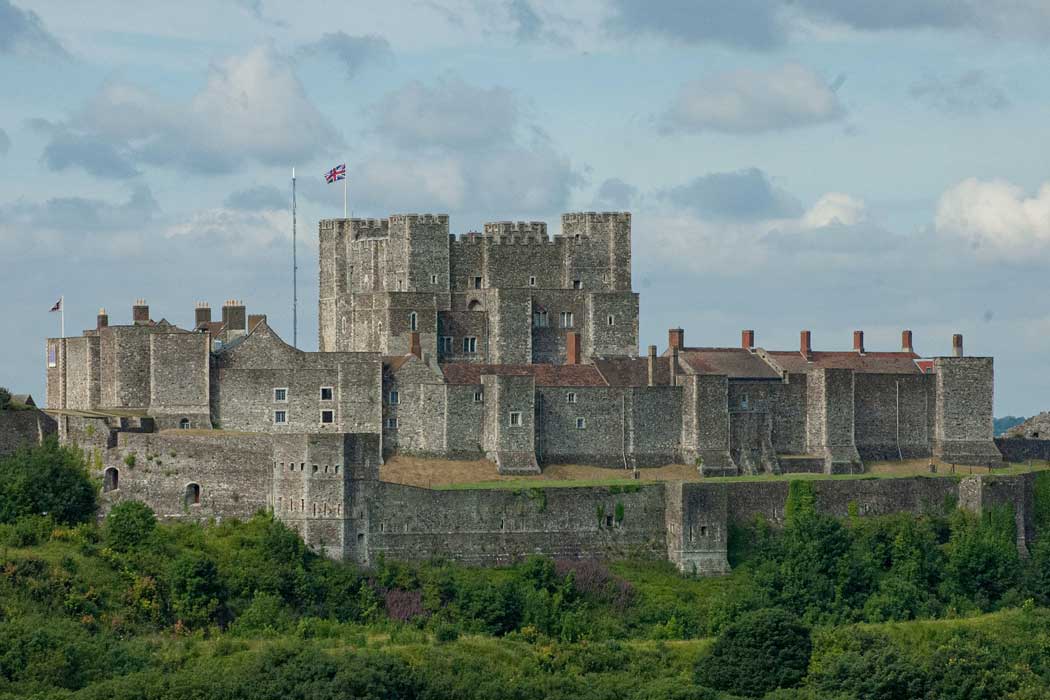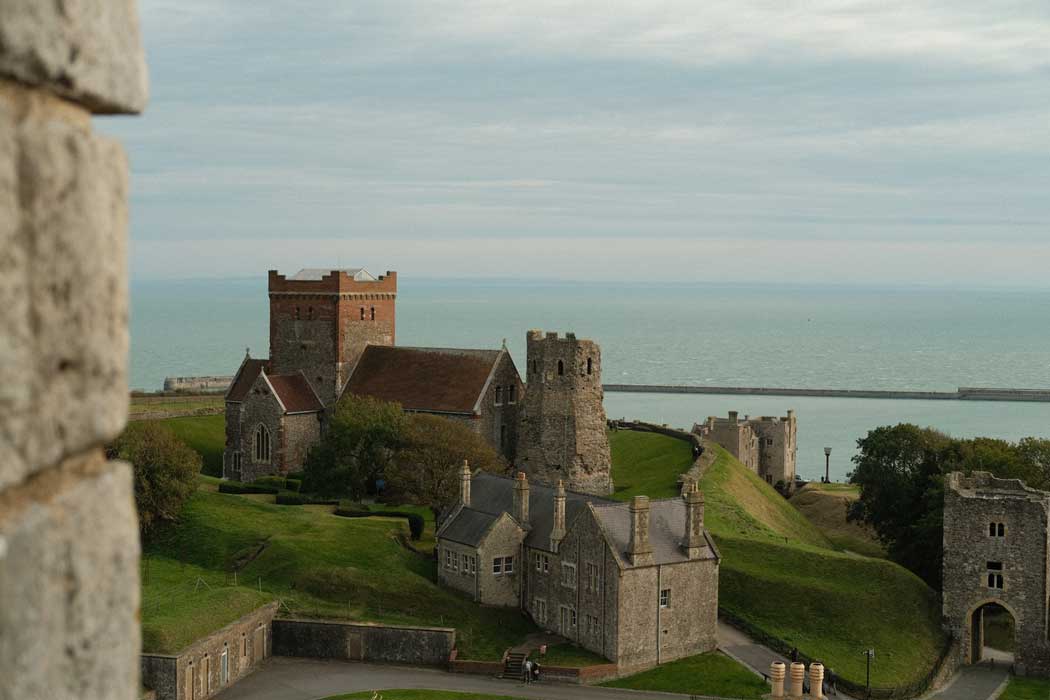Dover Castle is one of England’s most iconic and historically significant fortresses. It has served as a key defensive stronghold throughout many important periods of English history.
Although the site displays signs of use as an Iron Age fortress prior to the arrival of the Romans in AD 43, the earliest parts of the castle date from the 11th century when William the Conqueror first built the castle following the Norman Conquest and it was in the 12th century during the reign of Henry II that the castle was expanded to its current size and most of what the visitor sees today dates from this period.
Significant additions were made to the Grade I-listed castle during the Napoleonic Wars and the castle was used as a command centre for the evacuation of Dunkirk and as a defensive stronghold against German bombing raids during the Second World War.

What to see at Dover Castle
Dover Castle is one of England’s largest and best preserved castles and the castle grounds also feature remnants of Roman Britain including England’s oldest lighthouse. The castle’s rich history means that there is a lot to see at Dover Castle and you can easily spend half a day here.
The grounds of the castle are home to a Roman lighthouse (also known as a pharos). This is England’s tallest and most complete Roman structure and one of the world’s only three surviving Roman lighthouses. Dating from the second century, the five-storey octagonal tower was converted into a belfry by the Saxons prior to the Norman Conquest.
Next to the lighthouse is St Mary in Castro, a working church dating from the Anglo-Saxon period.

Built by Henry II, the Great Tower is the central part of the castle and visitors can see the medieval interiors that include wall hangings and furnishings indicative of the medieval period. In order to make this part of the castle look more authentic, there aren’t any information panels inside the Great Tower; however, staff on the first and second floors are able to answer questions and provide more information about the building.
Although Dover Castle’s history dates back to Roman times with the most significant parts of the castle dating from the 12th century, it was used as a fortress more recently and in the 20th century it played a significant role in both the First and Second World Wars.
Visitors to the castle can see the First World War fire command post when the castle played an important role in protecting the Straits of Dover and Dover Harbour. The fire command post has informative displays about its role in the war and it also features the world’s only working example of a British three-inch anti-aircraft gun.
Dover Castle also played an important role in the Second World War and the secret wartime tunnels beneath the castle were used as an underground hospital.
In addition to the secret tunnel complex built during the Second World War, the castle also has a network of tunnels built during the medieval period, primarily to assist in protecting the castle from siege in 1216 and these tunnels were further expanded at the beginning of the 19th century in preparation for the threat posed by Napoleon at the time.
Visiting Dover Castle
Dover Castle covers a large area between the town centre and Dover Eastern Docks and it is around a 20-minute walk from the town centre or eight minutes by bus. If you’re travelling by public transport, bus route 81 runs here every half hour.
It is a relatively expensive attraction, although it is around 15% cheaper if you pre-book your tickets online in advance. Dover Castle is operated by English Heritage and English Heritage members (including holders of the English Heritage Overseas Visitor Pass) can visit free of charge. It is one of the more expensive English Heritage attractions so it is worth considering membership (or the Overseas Visitor Pass) if you are planning on a visit.
It is open year-round, although it is only open on weekends during the quieter winter months.
There are several places to eat and drink within the castle including the Naafi Restaurant, the Secret Wartime Tunnels Tearoom and The Keep Cafe.
Allow 3–4 hours for your visit to Dover Castle.
Book your tickets for Dover Castle
Save time and money by pre-booking your tickets to Dover Castle in Kent.
We may earn a small commission if you buy your tickets after clicking this link.
Free entry to Dover Castle with the English Heritage Overseas Visitors Pass
The English Heritage Overseas Visitors Pass gives you free entry to Dover Castle and over 100 other historic buildings and monuments in England.
We may earn a small commission if you purchase an English Heritage Overseas Visitors Pass after clicking this link.


There are no comments yet.